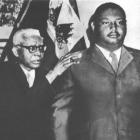ADVERTISEMENT
Jean-Jacques Dessalines
Could a marriage between Célimène Dessalines and Alexandre Pétion spare the Emperor?
The slave revolution in Saint Domingue (Haiti) could not have been possible without a union of Blacks and Mulatos in the island. After Haiti's independence, the leader of the revolution, Jean-Lacques Dessalines, had this great idea that his daughter could help bridge the gap between Alexandre Petion and himself by proposing that his daughter would marry Alexandre Petion, the Leader of the Mulato force who fought side by side with him. He also saw this as a way to bring both Blacks and Mulatos together.
Marie Françoise Célimène Dessalines was born on October 2, 1789. She was the daughter of Jean-Jacques Jacques I. Dessalines , the first Emperor of Haiti and Marie-Claire Happy Bliss GUILLAUME , Empress consort of Haiti. At the time, she was romantically involved with young Captain Chancy, a nephew of Toussaint Louverture.
It was reported that the marriage proposition between Marie Françoise Célimène Dessalines and Alexandre Petion was declined by Petion. He would later, according to some historians, take part of the assassination plot against Jean-Jacques Dessalines.
Could the marriage between Célimène and Pétion actually saved Emperor Dessalines' life?
Haitian Flag Under Francois Duvalier changed in 1964 to black and red
Let me make this clear. neither Francois Duvalier nor his son Jean Claude Duvalier created the new Haitian flag.
In 1964, the Haitian Dictator Francois "Papa Doc" decided to abandon the Red and Blue flag that has been adopted by haitians for over a century and return to the black and red colors. which was flown for the first time by Jean Jacques Dessalines, the founding father of the nation.
From 1964 to 1986 the Black and Red flag was the official flag of the nation. It would not change until the end of the Duvalier reign, when Jean Claude Duvalier went into exile in France. At that point, it was restored to red and blue.
Throughout the history of the Haitian flag, whether the colors are red, blue or black, it has remained a symbol of pride for many Haitians. Some would make you believe that the flag is deeply rooted in the Vodun religion and Jean Jacques Dessalines was in a temple of the religion in Merote, Haiti when he created the flag. Following the death of Dessalines, the country was divided with Henri Christopne in the North, holding on to the Black and Rd, while Petion in the South, red and Blue flag
Jean-Jacques Dessalines and Alexandre Petion
Here is a picture of two Haitian leaders: Jean-Jacques Dessalines and Alexandre Petion. In public protest that took place in November 2013, the race issue cameback as the people protesting took their fight to the affluent city of Petion-Ville.
The anti-government protest became violent as those opposed to the demonstration threw stones and Police fired tear gas
As the protest took the turn to go to Petion-Ville, many stated that "Dessalines was visiting Petion".
Jean-Jacques Dessalines born in Grande-Rivière-du-Nord
Jean-Jacques Dessalines, the Father of Haitian independence was born in Grande-Rivière-du-Nord
Grande-Rivière-du-Nord is the place where Haiti's slave rebellion began, and it was the site of Grade Rivière du Nord Battle.
During U.S. Occupation between 1915-1934, a rebellion was led by resistance fighter Charlemagne Peralte.
The town contains many attributes. It possesses virgin forestland, produces clean mountain-spring drinking water, and participates in agricultural production.
But its infrastructure is not completely developed with bad roads, and absence of an airport. Projects for the town's urbanization are currently in the works.
Carnival of Flower 2013 with with its 1,500 patrons in full swing
Carnival of Flower 2013. There were some Protests. The complaint voiced by the hundreds of protestors who took to the streets of downtown Port-au-Prince while the Carnival of Flowers, with its 1,500 patrons, was in full swing, was that the government should have used the $2.2 million budgeted to provide revelers a good time for other, more worthy, causes. Government officials have, however, charged them with being near-sighted, explaining that the festivals employed many individuals, including makeup artists and dancers, and is an investment in the country's culture that could pay significant dividends through tourism in the future.
Slave Rebellion in Saint Domingue, Toussaint L.Ouverture and Jean Jacques Dessalines
Picture of Toussaint L.Ouverture and Jean Jacques Dessalines
A very short and simple history of Haitian Revolution is that it started in 1791 with an organize slave rebellion and ended in 1803 with the French Colony called St. Domingue turning into the first ever independent black nation called the Republic of Haiti. This is very true but the slave rebellion was not the only rebellion. There were in fact different revolutions that occurred simultaneously because of the French Revolution which started in 1789 in Paris. These included - Planters' move towards independence, the People of Color's revolution and the 1791's slave uprising.
Serment des Ancetres Painting
Here is a picture of the Famous Haitian painting Serment des Ancetres.
This artwork was produced in 1822 by artist Guillaume Guillon-Lethière (1760-1830). , the painting "Serment des Ancêtres". This painting is considered as symbolism of the historic meeting between Alexandre Petion and general Jean-Jacques Dessalines

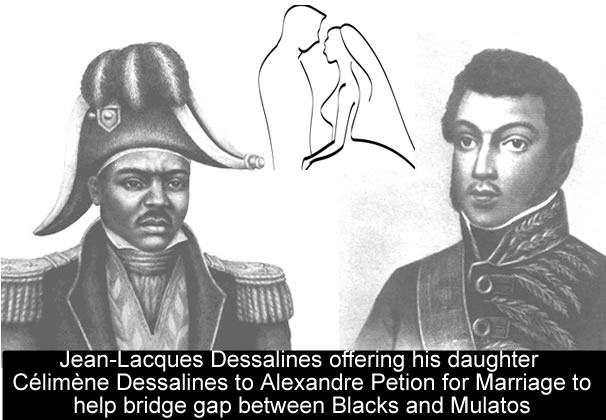
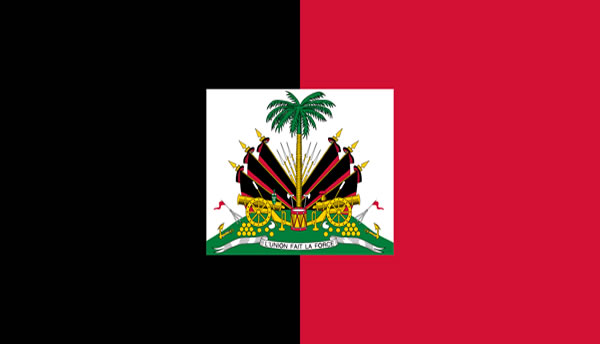
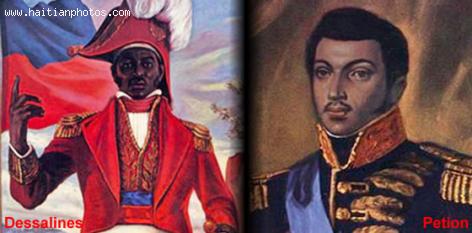
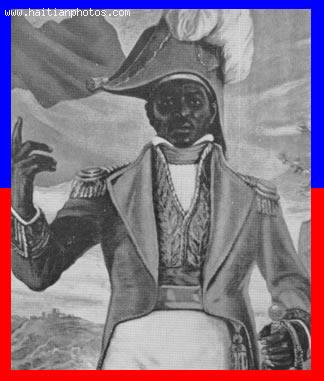
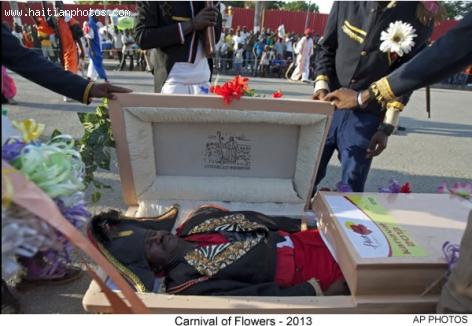
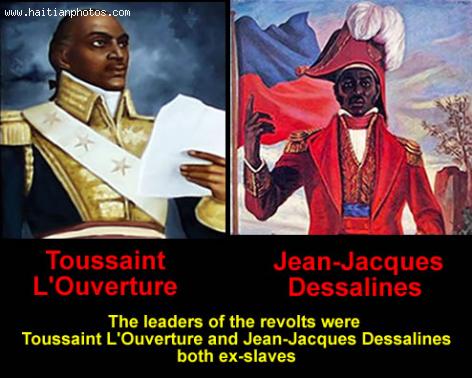
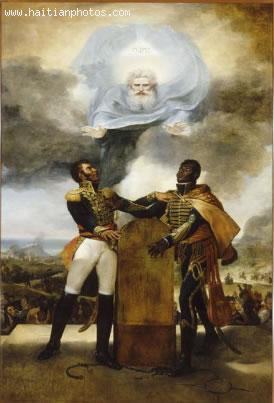
 Haiti License Plate or Plaque d'immatricules a DGI
Haiti License Plate or Plaque d'immatricules a DGI  All inclusive Royal Decameron Indigo
All inclusive Royal Decameron Indigo  François Nicolas Duvalier Potential Candidate for President of...
François Nicolas Duvalier Potential Candidate for President of...  Haitiano-Japanese Naomi Osaka wins the US Open against Serena...
Haitiano-Japanese Naomi Osaka wins the US Open against Serena...  Paul Eugène Magloire, born in Quartier Morin
Paul Eugène Magloire, born in Quartier Morin  Meet Haitian-American professional baseball pitcher Touki...
Meet Haitian-American professional baseball pitcher Touki...  Dr. Henri Ford, First Haitian Dean At University of Miami Med...
Dr. Henri Ford, First Haitian Dean At University of Miami Med...  Dr. Michaëlle Amédée Gédéon is dead
Dr. Michaëlle Amédée Gédéon is dead 
